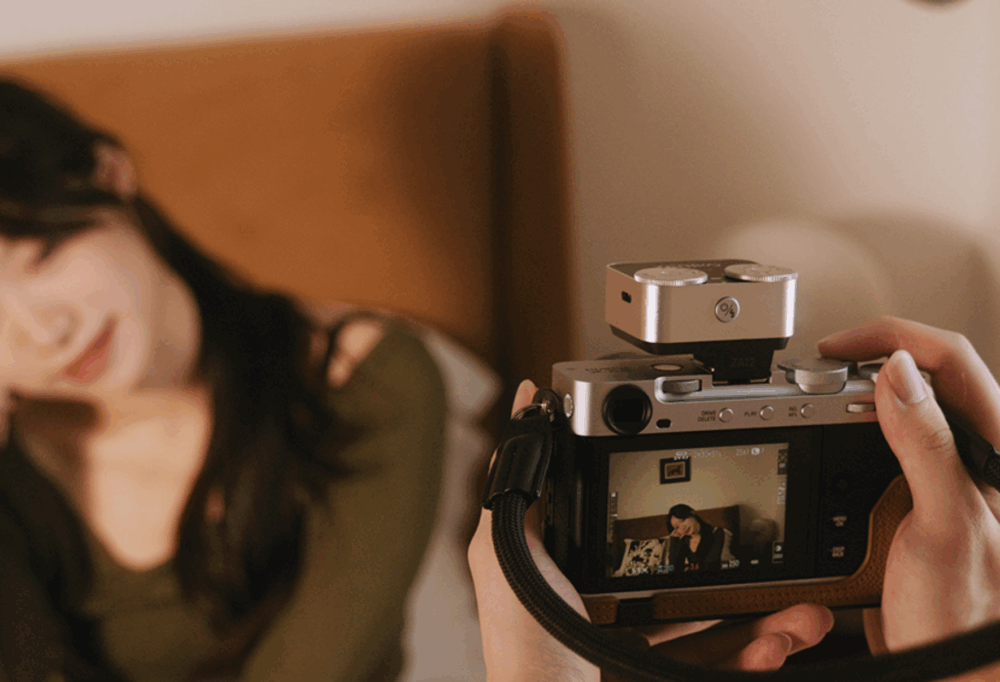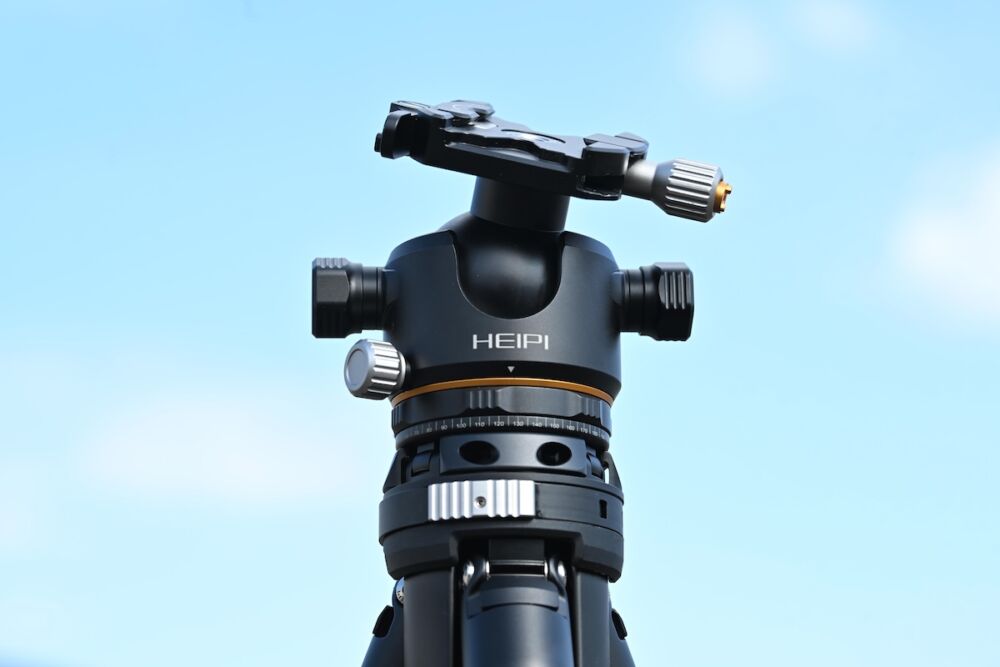A 35mm f/1.8 full-frame prime lens is almost as useful and popular as a “nifty fifty”, in fact, many photographers prefer it for the slightly wider angle and sense of closeness that it gives. (Which is your favorite, 50mm or 35mm? Leave a comment and let us know!)
Considering how likable 35mm primes seem to be, it’s surprising that Sony didn’t make this lens sooner- their brand-new FE 35mm f/1.8. In fact, in a small twist of irony, Nikon and Canon both beat Sony to the punch with their own full-frame mirrorless 35mm f/1.8’s, despite their mirrorless systems being only ~1 year old at present. (Sony’s A7-series is about to turn six!)
So, was this Sony lens worth the wait? Spoiler: it’s very well-built, it’s highly portable, and it looks pretty sharp even on Sony’s new 61-megapixel A7R IV.
However, it costs about $750. Considering that you can get a Sony FE 50mm f/1.8 for about $200-250, you have to really want a 35mm lens instead of 50mm lens in order to spend three times more.
In this article, we’ll give our first impression of the lens overall, and the images it produces. Soon, we’ll get the lens in-studio for some extensive testing, take it out on some real-world work/shoots, and give you our final verdict.
Initial Review | Sony 35mm f/1.8 GM
 Sony FE 35mm f/1.8, A7RIV (Read our first impressions of the A7RIV here!)
Sony FE 35mm f/1.8, A7RIV (Read our first impressions of the A7RIV here!)
In the spirit of full disclosure, I will mention that this lens’ initial testing was done at Sony’s Kando Trip 3.0, which is a Sony-hosted conference/workshop for all types of photographers, videographers, and any type of content creators. Kando is focused largely on artistic growth, and offers various shooting opportunities from landscapes to portraiture, plus meet-and-greet opportunities with fellow photographers, and classes of all types from photography to public speaking. Plus, of course, getting to take new Sony products out for a quick spin.
 Sony FE 35mm f/1.8, Sony A7RIV | 1/250 sec, f/5.6, ISO 100
Sony FE 35mm f/1.8, Sony A7RIV | 1/250 sec, f/5.6, ISO 100
Of course, we’ll be doing our own independent testing & reviewing soon, and will bring you our final verdict on this lens! In this article, we’ll also mention all of this lens’ direct competition, and who might want to consider an alternative.
Build Quality & Handling

How doe it feel? It balances very well on any of the relatively portable A7-series cameras. Compared to any 35mm DSLR prime you might use on an FE adapter, or compared to any of the f/1.4 35mm Sony FE-mount primes, the balance of the 35mm f/1.8 FE will feel great for your wrists if you do a lot of hand-held shooting.
Overall, this experience will be very welcome for all those photographers who have been waiting for a lightweight, portable prime in this range to use on their lightweight, portable mirrorless body.
For those who are curious, one of the few lenses that is, in fact, significantly smaller, lighter, and cheaper than this new Sony is the slower-aperture, third-party Samyang 35mm f/2.8 FE, which usually goes for $400 but can be found for about $270 if you catch one of their semi-regular deals. (The other alternative being, the 2013 Sony-Zeiss 35mm f/2.8, which costs exactly the same as this modern f/1.8 option.)

The build quality is, surprisingly in this age of so many “high-grade plastic” lenses, …a metal barrel, mount, filter threads, and a generally robust feel. It is allegedly “weather resistant”, but I don’t think that means it’s flagship-grade (Sony GM) level sealed.
The focus ring is capable of linear operation, which is a very welcome feature for electronically controlled focus rings for both photographers and videographers. However, there are of course no hyperfocal markings, and the distance scale is displayed electronically on the viewfinder/LCD screen.
Oh, and the FE 35mm f/1.8 also has one of the customizable Fn buttons, a feature which we usually only see on GM or G-series lenses! That’s a very nice touch for those of us who need as many custom buttons as possible.
Bottom line: This lens physically feels more alike the now-legendary Sony FE 55mm f/1.8 ZA, a $1K lens, than the $200 50mm f/1.8.
…But, how do the images look?
Image Quality – Sharpness
 Sony FE 35mm f/1.8, Sony A7RIV | 1/1600 sec, f/1.8, ISO 100
Sony FE 35mm f/1.8, Sony A7RIV | 1/1600 sec, f/1.8, ISO 100
 100% crop, f/1.8, center, 61 megapixels (Fine-radius sharpening applied)
100% crop, f/1.8, center, 61 megapixels (Fine-radius sharpening applied)
Simply put, this lens seems to have enough resolving power to handle the 60-megapixel sensor of the A7R IV, which is a feat. It also means that if you’re happy with ~24-megapixel sensors, you’ll likely call this lens’ sharpness “flawless”.
Image Quality – Color & Contrast
 Sony FE 35mm f/1.8, Sony A7R IV | 1/4000 sec, f/5.6, ISO 200
Sony FE 35mm f/1.8, Sony A7R IV | 1/4000 sec, f/5.6, ISO 200
View this post on Instagram
Sony FE 35mm f/1.8, Sony A7RIV | 4 sec, f/2.8, ISO 800
At a glance, the images look clear and vibrant, without any slight color casts or haze that you sometimes see with third-party lenses.
Really, though, let’s be honest: when it comes to color reproduction and tone, the raw processing engine that you use is often more important than the overall clarity of the optic being used.
With that said, we’re running a beta version of an Adobe Lightroom camera profile for the Sony A7R IV, which was used for many of these sample images, so a final verdict on colors and tonal response will have to wait.
Also, I’ve found that sometimes Adobe’s Camera Raw processing engine isn’t even the best way to do justice to Sony ARW files. So, in our full review, I’ll be processing at least a handful of images in Capture One Pro 12, from both the A7R IV and A7R III. Stay tuned!
Image Quality – Distortion, Aberration, Flare, Fringing
 Sony FE 35mm f/1.8, Sony A7RIV | 1/1320 sec, f/1.8, ISO 100
Sony FE 35mm f/1.8, Sony A7RIV | 1/1320 sec, f/1.8, ISO 100
 100% crop, f/1.8, off-center, 61 megapixels (Fine-radius sharpening applied)
100% crop, f/1.8, off-center, 61 megapixels (Fine-radius sharpening applied)
These more critical aspects of image quality are also something that we’ll have to mostly leave un-decided in this initial review. However, at a glance it seems that none of the more in-depth aspects of image quality give much cause for concern, except maybe the color fringing which is visible off-center even when stopping down a little bit.
 100% crop, f/5.6, corner (Animation shows Adobe fringing removal)
100% crop, f/5.6, corner (Animation shows Adobe fringing removal)
Other than that, there’s very little distortion, (although that could be largely thanks to a built-in correction profile) and vignetting is present but natural-looking at f/1.8.
 Sony FE 35mm f/1.8, Sony A7RIV | 1/30 sec, f/14, ISO 100
Sony FE 35mm f/1.8, Sony A7RIV | 1/30 sec, f/14, ISO 100
Regarding vignetting, though, it does seem like there might be a bit of vignetting still present even when stopped-down, as you can see in the corners of the above image. This is probably not an issue for most photographers, but it’s a little odd considering that all mirrorless name-brand lenses are coming with correction profiles built-in, which should perfectly correct vignetting especially at small apertures.
We’ll post our final conclusions soon when we’ve had a chance to fully compare this newest Sony lens against some of its competition in-studio. If you have any requests for comparisons, please leave a comment below! We’ll also briefly mention some of the competing options below before we wrap up.
Sony 35mm f/1.8 FE Versus The Competition
One of the best things about today’s highly competitive market (and the age/maturity of Sony’s FE mount) is that we have quite a few great options for 35mm prime lenses, even in the sub-$1K price range. So, let’s consider how the Sony 35mm f/1.8 FE might stack up against other lenses in its price range. We’ll list them ranked from “most modest” to “most insane”:
Rokinon AF 35mm f/2.8 FE ($499, sometimes $269)
Sony FE 35mm f/2.8 Zeiss ($748)
Rokinon AF 35mm f/1.4 FE ($799, sometimes $528)
Sony FE 35mm f/1.4 Zeiss ($1498)
Sigma 35mm f/1.4 FE Art ($899, sometimes $699)
Sigma 35mm f/1.2 FE Art ($1499)
Of course, if you have double the money to spend, I would highly recommend checking out the Sony-Zeiss 35mm f/1.4, or maybe waiting to see if a 35mm f/1.4 GM comes out sometime soon. Such lenses in the ~$1500 range definitely offer that “look” which many portrait and other types of photographers crave.
Having said that, most viewers aren’t going to notice the difference between f/1.4 and f/1.8 in real-world conditions, but are indeed going to be very tempted by a $750 price point for a lens that offers professional quality in a portable package.
Rokinon AF 35mm f/1.4 & f/2.8 FE

Quite honestly, the strongest competitor to the Sony 35mm f/1.8 FE is not another f/1.8 lens, nor is it a Sony lens. It’s the Rokinon/Samyang AF 35mm f/1.4 FE, and yes, that’s an autofocus lens made exclusively for the Sony FE mount.
And, let’s not beat around the bush: the Rokinon/Samyang AF 35 is a fantastic lens, at a shockingly good price. It’s actually currently available for just $530, which is an absolute steal and a no-brainer if you’re OK with third-party lenses.
However, if you don’t catch that incredible price and happen to be shopping for a 35mm prime at a time when that Roki-Yang is its usual $799, the value of the Sony 35mm f/1.8 becomes much more present, because of its name-brand reliability factor. (Autofocus and build quality have historically not been Roki-Yang’s strengths, though they are starting to improve.)
If you’re on a “nifty fifty” budget, though, and want a truly “pancake” sized little 35mm prime, you might want to completely give up all your prime lens aperture speed advantage, and consider the Rokinon AF 35mm f/2.8 FE. It’s as slow as a fast zoom, it’s not perfect optically, it’s not indestructible, but it sure is tiny! If you can score one for $269 instead of $400, it might be what some are looking for.
Sigma 35mm f/1.4 FE Art & Sigma 35mm f/1.2 FE Art
Now available in a native Sony E (FE) mount, Sigma’s legendary 35mm f/1.4 Art lens is, of course, “just” an adaptation of the original DSLR-oriented optical formula.
That lens is still one of the best 35mm’s around, if you want a good balance of sharpness and durability without breaking the bank or lugging around a totally ridiculous beast of a chunk of glass.
Speaking of “totally ridiculous”, we also now have the Sigma 35mm f/1.2 E Art, a ground-breaking new prime lens that offers a crazy-fast aperture which is, in fact, a whole stop faster than f/1.8, and 2 2/3 stops faster than an f/2.8 prime/zoom. We don’t yet know just how well it will perform on 40-60 megapixel sensors, however, it is absolutely enormous and twice the price of the Sony FE 35mm f/1.8, so it’s probably in a totally different realm of consideration and not the right choice for anyone who is looking for a portable walk-around lens.
It’s probably safe to say that both of these Sigma FE-mount lenses are ridiculously sharp at f/1.8, however, they’ll both feel very front-heavy when hand-holding. Compared to the svelte design and handling of the Sony FE 35mm f/1.8, they’re aimed at someone who highly values the faster aperture more than anything else.
It’s also worth noting that third-party lenses can always introduce slight issues with autofocus reliability, and may not offer the same level of perfection with profile corrections. We do plan to do a lot more extensive testing of third-party lenses on name-brand mirrorless cameras, especially as third parties begin making optics for Canon and Nikon’s mirrorless mounts as well.
Nikon Z 35mm f/1.8 S & Canon RF 35mmf /1.8 IS Macro

Speaking of other brands, although you’re not likely to completely jump ship” from Sony to a different full-frame system for just this one relatively modest lens, I’m sure that many people want to know how this Sony lens stacks up against its competing name-brand systems.
They’re all really good. They’re all built solidly, though the Nikon Z 35mm f/1.8 S seems to be in the lead with regard to durable construction, (weather sealed, built like a plastic tank) …and the Canon RF 35mm f/1.8 IS STM has its macro capability. (0.5x, not bad!)
They’re all very sharp in the central area, and pretty decent in the corners. So, as I predicted, anybody shopping for a portable 35mm prime is likely going to consider literally anything else besides the qualities of these three lenses when making their decision.
With that said, what if you’re buying your first full-frame mirrorless system, and aren’t currently committed to an existing DSLR lens collection? The Sony bodies and the rest of FE lens arsenal are indeed the most well-rounded choice, even if the optical performance of the Sony is just a touch behind the Nikon, and lacks the useful close-focusing of the Canon.
That is, Sony is in the lead overall, for now… Canon and Nikon are likely working hard to deliver both improved bodies and expansive lens lineups for their new RF and Z mirrorless mounts, so the playing field will likely be much more level in just a year or two.
SOny 35mm f/1.8 FE Review | More Sample Images
 Moonlight on misty golf green and cattails, Sunriver, Oregon
Moonlight on misty golf green and cattails, Sunriver, Oregon
Sony FE 35mm f/1.8, Sony A7RIV | 2 sec, f/2, ISO 800
 Medium-close horizontal portraits: I definitely prefer 35mm over 50mm!
Medium-close horizontal portraits: I definitely prefer 35mm over 50mm!
Sony FE 35mm f/1.8, Sony A7RIV | 1/250 sec, f/1.8, ISO 100
 Moonset timelapse, Sunriver, Oregon
Moonset timelapse, Sunriver, Oregon
Sony FE 35mm f/1.8, Sony A7RIV | 4 sec, f/2.8, ISO 800
 2-image panoramic stitch, single-frame HDR processing
2-image panoramic stitch, single-frame HDR processing
Sony FE 35mm f/1.8, Sony A7RIV | 10 sec, f/2.8, ISO 100
 Close-focusing and soft Bokeh: One reason why I love a good 35 Prime!
Close-focusing and soft Bokeh: One reason why I love a good 35 Prime!
Sony FE 35mm f/1.8, Sony A7RIV | 1/320 sec, f/1.8, ISO 100
Initial Verdict
What it all boils down to is this lens’ potential to offer name-brand reliability versus its competition, in a portable package. While I was doing initial testing with this lens at Sony’s 2019 Kando Trip event, the thing that stuck out to me the most was indeed not flawless GM-class image quality, but the fact that it felt professional, without the heft and (most of the) price tag of a flagship lens.
Different photographers like primes for different reasons. Some photographers absolutely need extreme apertures and the extreme sharpness that is possible compared to an f/2.8 or f/4 zoom lens. Other photographers just want something portable and unobtrusive, something that isn’t as unwieldy as a big fat zoom lens.
The Sony 35mm f/1.8 definitely falls into the latter category, and manages to do it while offering near-professional results and overall quality.
It may not be as much of a killer value as the f/1.4 and f/2.8 Rokinon 35mm’s, or even the Sigma 35mm f/1.4 Art, but it seems to be worth checking out if you’d like a portable, name-brand alternative to the big pro-grade primes.
To be totally honest? At $750 for this lens, I’m a little tempted to just keep saving and hold out for the Sony FE 24mm f/1.4 GM, which is “just” $1398, and downright tiny for a professional lens. If you’re OK with shooting in Super-35 (APS-C crop) mode, you’ll get both a 24mm f/1.4 and an equivalent 35mm f/2 prime in one.
But, maybe $750 is already a stretch. Maybe you just picked up an A7iii, and are looking for a fantastic yet modest medium-wide portrait/candid lens? You’ll appreciate Sony’s FE 35mm f/1.8.
Lastly, stay tuned for more in-depth comparisons and our final test results coming soon!














